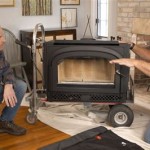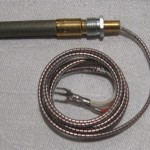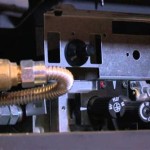Stove in Fireplace: A Comprehensive Overview
The installation of a stove within an existing fireplace is a common method for homeowners seeking to improve heating efficiency and aesthetics. While a traditional fireplace often loses a significant amount of heat up the chimney, a stove, whether wood-burning, gas, or pellet-fueled, offers a more contained and controlled combustion process, resulting in greater heat output and reduced energy waste. This approach can provide a viable alternative to a complete fireplace renovation or serve as a cost-effective heating solution for specific areas of a home.
The integration of a stove into a fireplace requires careful planning and execution to ensure safety, optimal performance, and compliance with local building codes. The existing fireplace structure must be assessed for structural integrity and compatibility, and the appropriate type and size of stove must be selected to match the heating needs and the dimensions of the fireplace opening. Proper ventilation is crucial to prevent the build-up of dangerous gases, and the entire installation should be performed by a qualified professional to guarantee safety and efficiency.
Several factors contribute to the popularity of installing a stove in a fireplace. The aesthetic appeal of a stove, particularly a wood-burning model, can enhance the ambiance of a room, providing a focal point and creating a warm and inviting atmosphere. From a practical standpoint, a stove offers greater heating efficiency, reducing reliance on central heating systems and potentially lowering energy bills. The ability to control the rate of combustion within a stove allows for more precise temperature regulation and extended burn times compared to an open fireplace.
Improved Heating Efficiency
The fundamental advantage of installing a stove in a fireplace lies in its superior heating efficiency. Traditional open fireplaces are notoriously inefficient, often losing the majority of their heat up the chimney. This is due to the unrestricted airflow and the rapid escape of hot gases. A stove, on the other hand, is designed with a closed combustion chamber and a controlled air intake system. This allows for a more complete and efficient burning process, extracting more heat from the fuel and reducing the amount of heat lost through the chimney.
Modern stoves often incorporate features such as secondary combustion chambers and catalytic converters, which further enhance efficiency by burning off unburned gases and particles. This not only increases heat output but also reduces emissions, contributing to a cleaner burning process. The airtight construction of a stove also prevents cold air from being drawn in from the room and sent up the chimney, a common problem with open fireplaces. The result is a significantly warmer room and a reduced demand on the home's primary heating system.
The specific efficiency gains achieved by installing a stove in a fireplace will vary depending on the type and age of the fireplace, the type of stove used, and the quality of the installation. However, it is generally accepted that a stove can provide a substantial improvement in heating efficiency compared to an open fireplace. This can translate into significant savings on energy bills over time, making the initial investment in a stove a worthwhile one.
Safety Considerations and Installation Requirements
Safety is paramount when installing a stove in a fireplace. The process introduces potential hazards related to combustion byproducts, such as carbon monoxide, and the risk of chimney fires. Therefore, diligent adherence to safety protocols and local building codes is essential. A thorough inspection of the existing fireplace and chimney is the first step. The chimney must be structurally sound and free from obstructions. If necessary, the chimney may need to be cleaned, repaired or relined to ensure proper venting and to prevent the build-up of creosote, a flammable substance that can lead to chimney fires.
Proper ventilation is critical for safe stove operation. A properly sized and installed flue liner is crucial for directing combustion gases out of the home and preventing them from leaking into the living space. The liner should be compatible with the type of fuel being burned in the stove. Building codes typically mandate specific clearances between the stove and combustible materials, such as walls and furniture. These clearances must be strictly observed to prevent the risk of fire. A hearth extension may also be required to protect the flooring from sparks and embers.
Installation should be performed by a qualified professional with experience in stove and fireplace installations. A professional will be familiar with local building codes and safety requirements and will ensure that the stove is installed correctly and safely. They will also be able to advise on the proper type and size of stove for the fireplace and the heating needs of the home. Following installation, a professional inspection is recommended to verify that the stove is operating safely and efficiently. Regular maintenance, including chimney cleaning, is essential for continued safe and efficient operation.
Choosing the Right Stove for Your Fireplace
Selecting the appropriate stove for installation in a fireplace involves considering several factors, including the size of the fireplace opening, the heating needs of the space, and the desired aesthetic. A stove that is too large for the fireplace opening may not fit properly and could pose a safety hazard. A stove that is too small may not provide adequate heating. The heating capacity of a stove is typically measured in British Thermal Units (BTUs) per hour. The required BTU output will depend on the size and insulation of the room being heated.
Different types of stoves are available, each with its own advantages and disadvantages. Wood-burning stoves offer a traditional aesthetic and can provide a significant amount of heat, but they require a readily available supply of wood and regular maintenance. Gas stoves offer convenience and ease of use, with the ability to control the flame and heat output with a simple switch. Pellet stoves burn compressed wood pellets, offering a relatively clean and efficient burning process, but they require a supply of pellets and electricity to operate.
The aesthetic appeal of the stove is also an important consideration. Stoves are available in a variety of styles and finishes, from traditional cast iron to modern stainless steel. The stove should complement the existing décor of the room and enhance the overall ambiance of the fireplace. Before making a final decision, it is advisable to research different stove models, read reviews, and consult with a qualified professional to ensure that the chosen stove is the right fit for the fireplace and the heating needs of the home.

How To Heat Your House With Just A Wood Burning Stove Chesneys

Choosing A Wood Burning Stove Or Fire For Your Home Stovax Gazco

Converting A Fireplace To Wood Burning Stove Chesneys

Stoves Wood Gas Pellet Lopi

Victorian Fireplace Hobbit Installation Small Stoves

Freestanding Wood Burning Stoves Sierra Hearth And Home

Wood Burning Stoves In Milton Keynes Inspirations

Can You Install A Wood Stove In Fireplace Direct Stoves

How To Prepare A Chimney For Wood Burning Stove Houzz Ie

Heat Design Luxury Fireplaces Stoves Gas Electric Fires
Related Posts








